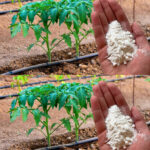Growing and harvesting lavender can be a rewarding experience, as it not only adds beauty to your garden but also offers aromatic blooms that can be used for various purposes, from crafting to culinary endeavors. Here are some tips to help you grow and harvest your own lavender plant:
- Choose the Right Variety: Select a lavender variety that is well-suited to your climate and growing conditions. English lavender (Lavandula angustifolia) is one of the most common varieties for home gardens, but there are many others to choose from.
- Select a Sunny Location: Lavender thrives in full sunlight, so choose a location in your garden that receives at least 6-8 hours of direct sunlight per day. Ensure the soil is well-draining to prevent waterlogging, as lavender plants are susceptible to root rot in soggy conditions.
- Prepare the Soil: Lavender prefers sandy or loamy soil with good drainage. If your soil is heavy or clay-like, amend it with sand, gravel, or perlite to improve drainage. You can also add organic matter such as compost to enrich the soil.
- Planting: Plant lavender in the spring after the last frost date or in the fall before the first frost. Space the plants 12-24 inches apart to allow for proper air circulation. Dig a hole slightly larger than the root ball, place the plant in the hole, and backfill with soil.
- Watering: Lavender is drought-tolerant once established and prefers slightly dry conditions. Water newly planted lavender regularly to help establish the roots, but avoid overwatering. Once established, water sparingly, allowing the soil to dry out between waterings.
- Pruning: Prune lavender plants in the spring to promote bushy growth and prevent them from becoming leggy. Trim back the plants by one-third, cutting just above the woody growth. Deadhead spent flowers throughout the growing season to encourage continuous blooming.
- Harvesting: Harvest lavender blooms when they are fully open but before they begin to fade. Cut the flower stems just above the foliage using sharp scissors or pruners. Harvest in the morning after the dew has dried but before the heat of the day.
- Drying: To dry lavender for culinary or crafting purposes, hang bunches of freshly harvested stems upside down in a warm, dry, well-ventilated area out of direct sunlight. Once dry, strip the buds from the stems and store them in airtight containers.
By following these tips, you can successfully grow and harvest your own lavender plant, enjoying its fragrant blooms and myriad uses in your home and garden.


